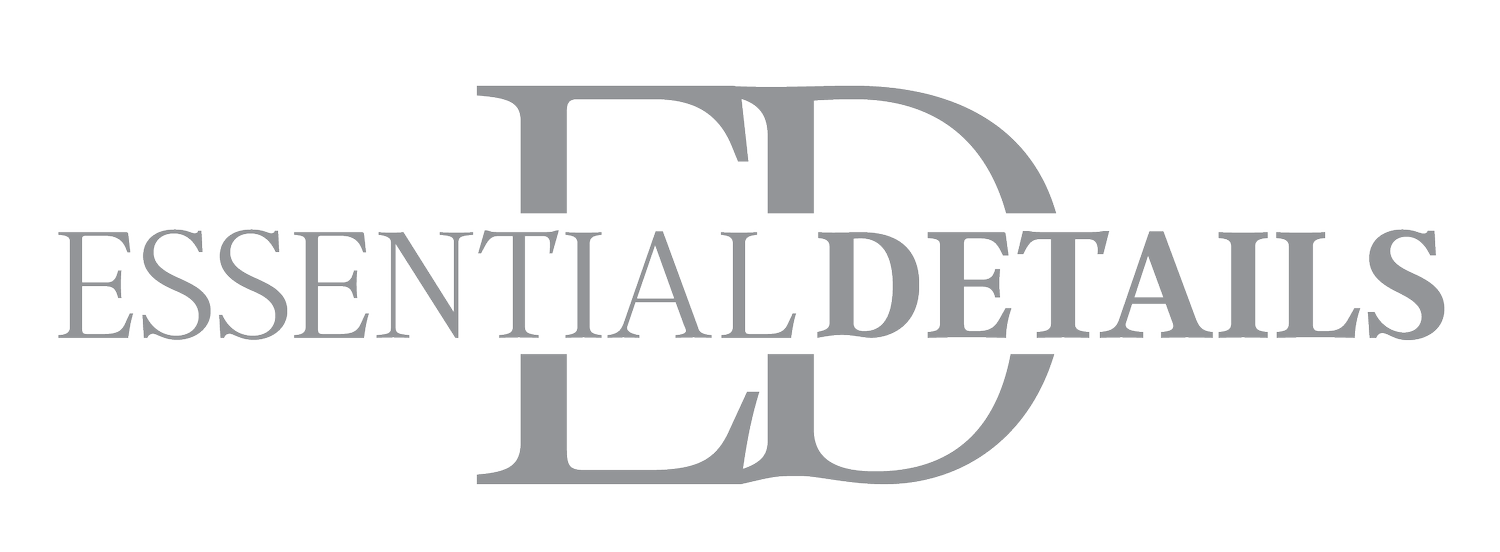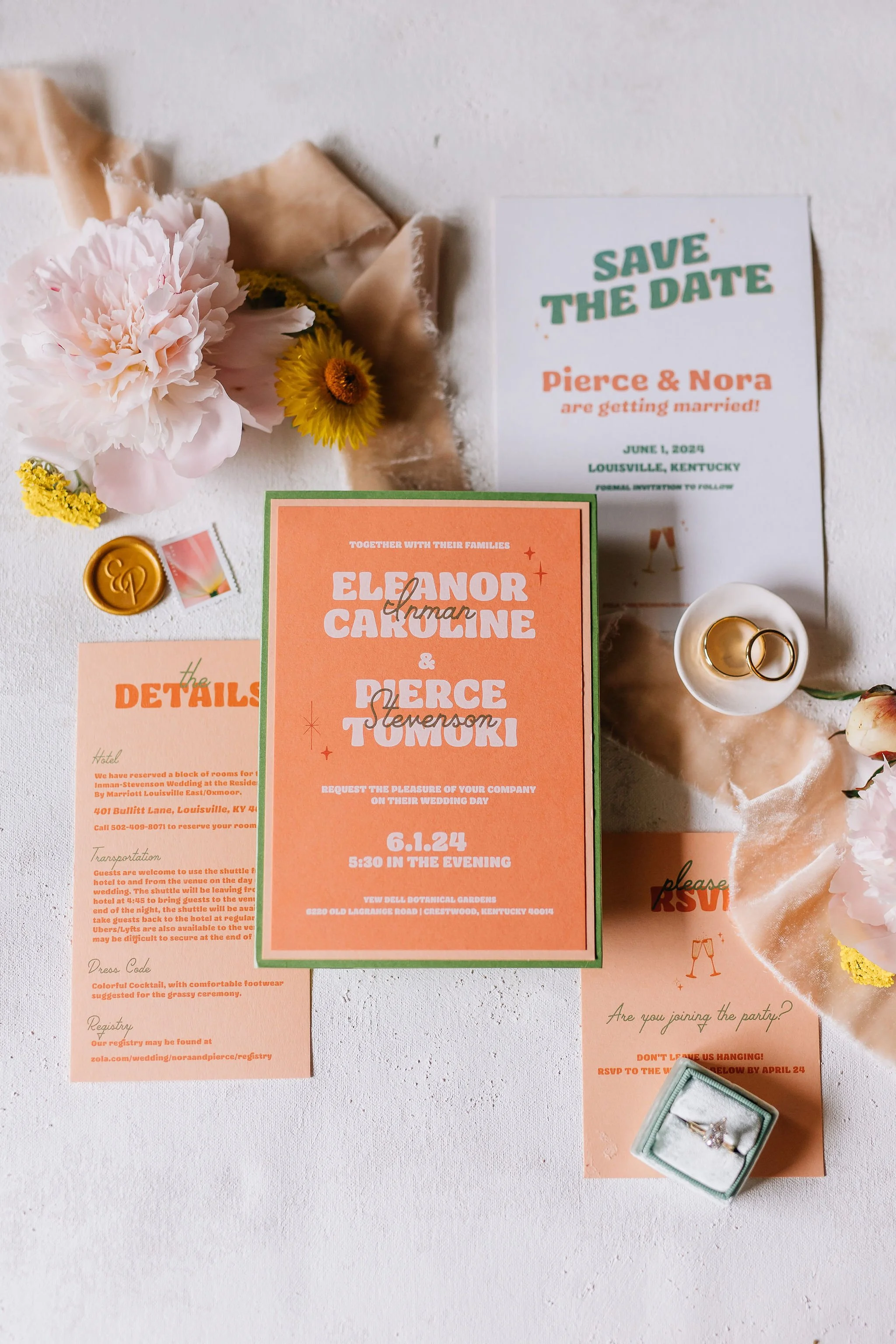Traditional vs. Digital RSVPs: A Designer’s Take on What Works
As a graphic designer who’s been creating wedding invitation suites for over a decade, I’ve seen firsthand how the RSVP game has evolved. While traditional mail-in cards are still a favorite for many, digital RSVPs have become more and more common. The good news? There’s no “right” choice. Both come with their own perks and quirks, and the best option is the one that fits your style, budget, and how you want your planning process to feel.
The Charm of Traditional RSVP Cards
There’s something so timeless about receiving a beautifully printed RSVP in the mail. If your wedding leans formal or traditional (or you just love, dare I say, vintage touches) this route sets the tone from the moment a guest opens their envelope. It’s also a keepsake, which some couples love to save alongside their invitation, without a URL or QR code that might be broken or outdated a few years down the road.
Things to keep in mind:
They can be lost in the mail
Responses may be incomplete or messy (hello, unreadable handwriting)
Guests sometimes RSVP for more people than they were invited for
You’ll likely be entering responses into a spreadsheet manually
You’ll need to budget for stamps and return envelopes
Still, for some couples, the charm and tactile experience of a paper RSVP is absolutely worth it.
This suite includes a classic mail-in RSVP, complete with a coordinating envelope for guests to send their reply. Photo by Melissa and Gary Photography
The Ease of Digital RSVPs
Digital RSVPs have come a long way – they can still feel beautiful and elevated when designed well. I prefer to include a separate RSVP card that points guests to a website or QR code rather than printing a URL on the main invitation (and definitely not just on the back of the invite — many guests miss that!).
Design-wise, here are a few things I always recommend:
Keep the RSVP card separate
A QR code isn’t necessary, but if you’d like to include one, be sure to pair it with a URL (not everyone uses QR codes, so it’s helpful to give guests both options)
Use a QR generator without scan limits – some free versions have caps
If the QR code is visible when guests open your suite, consider a belly band, pocket folder, or card layering to preserve the first impression and photo-worthy layout
From a functionality standpoint, digital RSVPs are a dream:
Guests can’t RSVP for more than their allotted number
You can require all info, like meal choices, before they can submit
Responses are instant, organized, and often auto-sort into a guest list spreadsheet
Guests are guided straight to your wedding website for more details
This invitation suite features a QR code subtly tucked into the pocket, so it’s not the first thing guests see when they open it, keeping the initial impression elegant and photo-ready.
Photos by Meaghan Premuda Photo
Can You Do Both? Yes!
For couples who want the best of both worlds, there’s a middle ground. I’ve designed RSVP cards that give guests a choice: “Kindly mail your response or RSVP online at the link below.” It’s an easy way to keep things accessible, especially for older guests who might not be as comfortable online, or for guests who just love dropping something in the mail. If you go this route, be sure to include a return envelope and postage for those who choose to send their reply by mail.
Etiquette, Budget, and How You Work Best
No matter which route you go, don’t forget to set a clear RSVP deadline. Just because it’s digital doesn’t mean you can wait forever!
If you’re budget-conscious, digital RSVPs can help you cut costs not just on stamps, but also on return envelopes and the time or expense of addressing them (especially if you're handwriting those yourself).
On the flip side, if the thought of holding each response card in your hand makes your heart skip, traditional RSVPs are worth the extra effort.
It also depends on how organized you want (or need) your planning process to be. Do you want RSVPs to neatly compile themselves into a list? Or are you okay with a little hands-on tracking?
Photo by Sarah Katherine Davis Photography
Photo by Abigail E Photo
Final Thoughts
There’s no one-size-fits-all answer, and that’s the beauty of it. Whether you love the elegance of a classic mailed card or the streamlined simplicity of a digital form, your RSVP choice should reflect your style, your event’s tone, and how you want to feel throughout the planning process.
Both can be designed beautifully, both can work seamlessly, and you truly can’t go wrong when you make the decision that feels right for you.
– Gretchen Burcham, Art Director at Essential Details
All of the invitation suites shown in this blog were designed by Gretchen Burcham for Essential Details clients.





